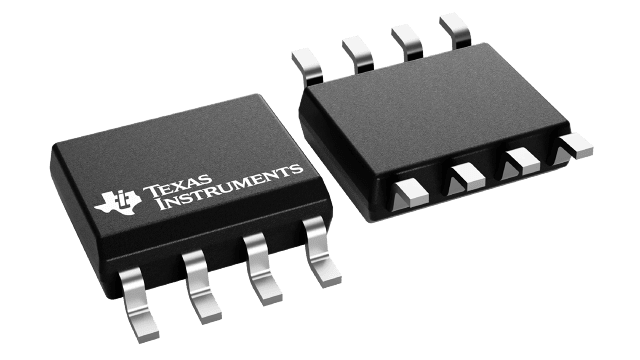Gehäuseinformationen
| Gehäuse | Pins SOIC (D) | 8 |
| Betriebstemperaturbereich (°C) 0 to 125 |
| Gehäusemenge | Träger 2.500 | LARGE T&R |
Merkmale von LM63
- Accurately Senses Diode-Connected 2N3904 Transistors or Thermal Diodes On Board Large Processors or ASICs
- Accurately Senses its Own Temperature
- Factory Trimmed for Intel Pentium 4 and Mobile Pentium 4 Processor-M Thermal Diodes
- Integrated PWM Fan Speed Control Output
- Acoustic Fan Noise Reduction With User-Programmable 8-Step Lookup Table
- Multi-Function, User-Selectable Pin for Either ALERT Output, or Tachometer Input, Functions
- Tachometer Input for Measuring Fan RPM
- Smart-Tach Modes for Measuring RPM of Fans With Pulse-Width-Modulated Power as Shown in Typical Application
- Offset Register can Adjust for a Variety of Thermal Diodes
- 10 Bit Plus Sign Remote Diode Temperature Data Format, With 0.125°C Resolution
- SMBus 2.0 Compatible Interface, Supports TIMEOUT
- LM86-Compatible Pinout
- LM86-Compatible Register Set
- 8-Pin SOIC Package
Intel is a trademark of Texas Instruments. Pentium is a trademark of Texas Instruments. All trademarks are the property of their respective owners.
Beschreibung von LM63
The LM63 is a remote diode temperature sensor with integrated fan control. The LM63 accurately measures: (1) its own temperature and (2) the temperature of a diode-connected transistor, such as a 2N3904, or a thermal diode commonly found on Computer Processors, Graphics Processor Units (GPU) and other ASIC's. The LM63 remote temperature sensor's accuracy is factory trimmed for the series resistance and 1.0021 non-ideality of the Intel 0.13 µm Pentium 4 and Mobile Pentium 4 Processor-M thermal diode. The LM63 has an offset register to correct for errors caused by different non-ideality factors of other thermal diodes.
The LM63 also features an integrated, pulse-width-modulated (PWM), open-drain fan control output. Fan speed is a combination of the remote temperature reading, the lookup table and the register settings. The 8-step Lookup Table enables the user to program a non-linear fan speed vs. temperature transfer function often used to quiet acoustic fan noise.
